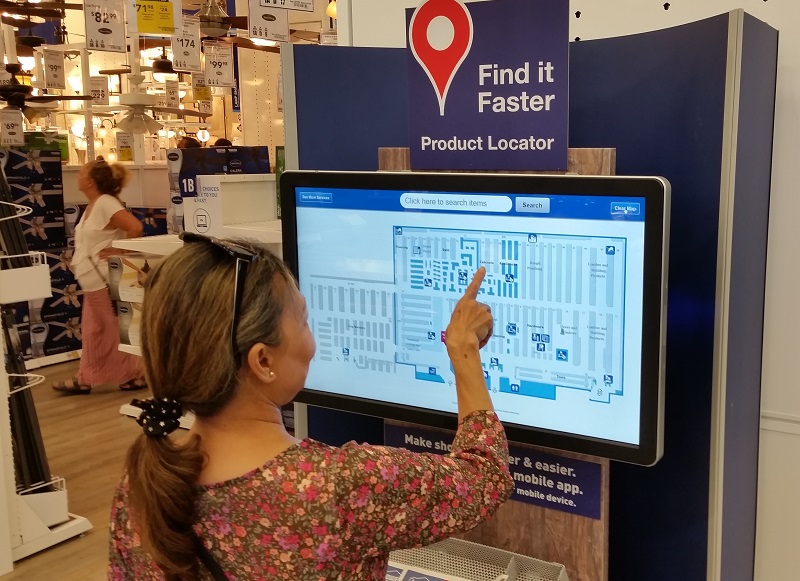Why Should You Have In-store Technology?

As we’ve all seen, the demise of the high-street has been troublesome for physical stores. But, recent statistics show that weekly bricks-and-mortar shoppers were up to 40% in 2015 and are expected to increase further to 44% in 2018. It’s likely that this is down to more people using shopping as a social activity and then placing their orders online. But, what does this mean for retailers?
Retailers can use this to their advantage though. They now have the opportunity to reduce their stock levels and use the space to create a more interactive experience — paving the way for more in-store tech. Together with QUIZ, womenswear retailer and owner of seven digital-led stores across the UK, we take a look at the importance of having in-store tech:
What technology is out there?
Most brands are on board with improving their online presence and e-commerce channels. But, recent research still indicates that people value brick-and-mortar stores — in fact, 81% of UK customers said that the physical stores were vital to the shopping experience. So, when it comes to improving the high-street and implementing in-store technology, what should retailers be getting involved with?
Studies have been carried out to determine which in-store technology is popular with customers — one discovered that kiosks powered by artificial intelligence (AI) are favourable. However, not all retailers are getting on board — 66% of those surveyed in one study said that they were yet to encounter artificial intelligence in-store. Do retailers realise the huge potential of this type of technology? In fact, 60% of consumers are attracted to the idea of using them to find products that they weren’t aware of before. As an example, in QUIZ’s digital stores, an in-store kiosk enables visitors to browse the full collection (even if some products aren’t available in-store) and order them to their homes or local store.
Brands must consider that having in-store technology can improve their customer service too. become better informed and more helpful to the customer. One way to do this is by providing employees with handheld iPads or other smart tablets. This allows staff to find the answer to a query, check a product’s availability and place orders for the customer without having to use a fixed computer. This can improve the customer’s experience and help build a stronger brand-to-customer relationship.
Augmented reality is another type of technology that brands should be making the most of. This can help the customer with their purchase decision and help them visualise themselves with the product. Although this can be made available through an app, there are also ways to introduce it in-store. In a fashion store, a smart mirror can allow customers to dress themselves in different outfits such as different maxi dresses for example, without actually trying them on. Similarly, in a furniture store, visitors can upload a photo of their home and try out pieces of furniture to see if it would suit their rooms.
Drive more in-store traffic
Being an owner of in-store technology can increase the number of people who come to your store.
Have you considered that having in-store tech could improve the attractiveness and competitiveness of your company? Some retailers are recognising this too as one report suggested that 53% of retailers view investments in new automations and appliances in-store as vital to keep up with their competitor activity.
Remember there can be issues
As we all know, technology can fail us at times. This can be frustrating and add time onto a customer’s visit which may result in a negative experience.
When RetailWeek carried out a study, they discovered that two thirds of those surveyed had experienced problems and breakdowns in-store with the technology. Unfortunately, this then affects sales — one third of customers said that they were unable to complete their transactions because of the technology difficulties.
Unfortunately for businesses, these negative experiences can deter customers from revisiting the store. Retailers must keep software and technologies updates and well-maintained to avoid issues like this.
Similar to this, if someone finds it hard to use the in-store technology, this can deter customers from getting involved with it. This could make people feel excluded too — in-store tech should be simple to use, and visitors should be accompanied when using it if it’s more complex.
It’s clear to see that in-store technology is becoming more important. Although customers are happy to shop online, they also enjoy shopping as a leisure activity and appreciate an interactive experience when doing so.
Sources
https://www.pwc.com/gx/en/industries/retail-consumer/consumer-insights-survey.html
https://www.itproportal.com/features/consumers-love-in-store-technology-so-its-time-for-retailers-to-respond/
https://internetretailing.net/themes/themes/quiz-brings-digital-into-westfield-stratford-store-15243
https://www.fool.com/investing/2018/07/06/can-in-store-technology-slow-the-retail-apocalypse.aspx







